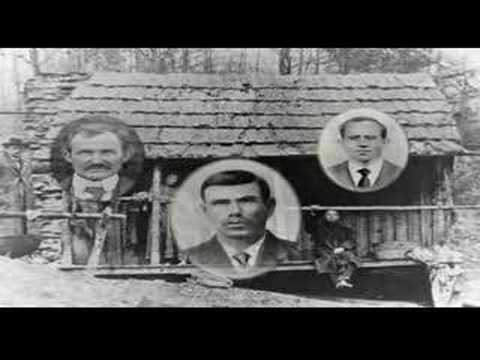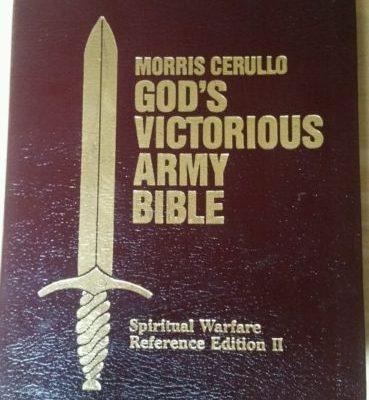Click to join the conversation with over 500,000 Pentecostal believers and scholars
Click to get our FREE MOBILE APP and stay connected
Charles Page | PentecostalTheology.com



Has it been resolved as to which came first the holiness (fire baptized movement) at Charleston, TN or the Church of God at Tellico Plains? It does seem that the fire baptized group was first.
- What do we all know about Kilpatrick and his connection to Liberty Baptist Church and the at Tellico Plains reformation
- First Assembly at Camp Creek (Cherokee County) NC
- In the Kilpatrick House [J. C. and Malissie Murphy lived there].
- Twenty-One Attendants at First General Assembly
The present Pentecostal movement began in the American Midwest in 1886, in Monroe County, Tennessee, near the North Carolina border. It spread west and triggered a movement called the Azusa Street Revival in Los Angeles, California in 1906, which lasted three years and served as a launching pad to the Pentecostal movement in the United States. With a strong and established presence in the Midwest and emerging occurrence in Southern California, the Pentecostal movement eventually spread to all corners of the United States. In the next decade, several Pentecostal churches were founded and eventually Pentecostal denominations were formed before 1920. For the next several decades if a person had a spiritual experience characterized by Pentecostal manifestations, they would for the most part, be kicked out of their church, leading them to eventually to join one that taught, supported, and encouraged people to seek Pentecostal experiences. Pentecostal churches and denominations grew during these decades. Some of the growth can be attributed to “new growth”; that is, people who formerly were not Christians and did not go to church. Yet many of the numbers can be attributed to “transfer growth”; that is, people who were already Christians and attending elsewhere who were force to leave and join a Pentecostal church.




Charlie Robin
What do we all know about Kilpatrick and his connection to LIbearty Baptist Church and the at Tellico Plains reformation / revival ? Jim Price Melvin Harter David Lewayne Porter Ed Brewer Alan N Carla Smith 1906 January 27-28 (Sa and Su)
First Assembly at Camp Creek (Cherokee County) NC
In the Kilpatrick House [J. C. and Malissie Murphy lived there].
Twenty-One Attendants at First General Assembly
Varnel Watson
I had the privileged of meeting the grandson of Kilpatrick at a TN yard sale just recently. He has helped Wade H. Phillips write his books and is writing a book about his own family. Still attends Liberty Baptist and is well acquainted with Church of God (+OP) history. The Kilpatricks rented the house when the first Church of God Assembly happened there. Later on AJ Timlinson purchased the house with one acre of land that it sat on. And then again later he purchased additional one acre to go with it but the 160 acre farm that it sat on is still intact and in the Kilpatrick which I was surprised to learn. They still attend Liberty Baptist where 40 were expelled before establishing the Christian Union and Holiness Church at Camp Creek. They knew little about speaking in tongues back then – the argument of expelling was sanctification. The baptist people believed in eternal security while the new fraction embraced the teaching of Wesleyan entire sanctification and holiness renewal insisting there was much work to be done in the life of the believer after salvation and that salvation could be indeed lost. He concluded that had it not been for entire sanctification and holiness renewal, there would have never been an argument, no one would have been expelled and the Church of God would have never been started. It was sanctification and holiness that caused the Church of God to come into existence. My, GOD have we arrived today just to find out we have lost the very reason for which we began as a movement until Holiness prevails again in the House of God…
Dan Irving
I read this one a few years ago, but I found it had some serious short-comings. Anyone know of some good (candid, not self-serving) books on the various COG’s histories? I’d really like to learn about this area of Pentecostal history.
Link Hudson
From what I recall of Synan’s book, the Fire-Baptized group was older. Some of that group joined the Pentecostal Holiness. Others did not. There are some Fire-Baptized churches in Georgia where men wear long sleeves all the time, to cut the grass. They won’t wear plastic watches, and no gold, but they consider a silver pocket watch to be okay. I talked to one who wouldn’t wear a watch, but he drove a yellow Corvette.
Varnel Watson
Will you pls cite a source for that. You are making an interesting historical and relational assertion no one has seen before on this topic
Link Hudson
Troy Day I don’t have a copy of it. Many years ago, I believe I read this in Vincent Synan’s The History of the Holiness-Pentecostal Movement in the United States. I think that sort of started the field as an academic discipline more or less. I figured people who studied Pentecostal history started with that. But I guess some folks study more one denomination’s history.
Link Hudson
I read an online article online that had something in the title like ‘Beniah at the crossroads’ that said that there were ‘gift adventists’ or ‘gift people’ who exercised spiritual gifts, including speaking in tongues, in the 1870’s. He thought that a certain Brother Daugherty may have had contact with some other early proto-Pentecostals. I seem to remember Tomlinson’s name being discussed. The author seemed too pleased with finding apparently historical connections to Frank Sandford with the Pentecostal movement. That was the guy who led a commune where people starved because they didn’t believe God wanted them to work.
There were also some Pentecostal-like revivals among some of the Scandanavian Pentecostals in Minesota or Wisconson or somewhere in the northern parts of the midwest, speaking in tongues pre-Azusa. One of the leaders later was in the A/G.
And a couple of Pentecostal movements broke out at about the same time in India and South America among Methodist groups with speaking in tongues.
Varnel Watson
Thanks Link Hudson I will check it out. I have it somewhere
Link Hudson
Troy Day, I believe Synan is PH, and some of the Firebaptized joined PH, so he’d probably know a lot about it. And I think this book came out of his dissertation, but I’m not sure.
Varnel Watson
I’ve never seen the Fire-Baptized claim before. There were however many speaking in tongues since about 1855 in America if this is what you meant by your comment http://www.pentecostaltheology.com/historically-and-theologically-first-person-in-america-to-speak-in-tongues-with-holy-ghost-baptism/
Link Hudson
There was a preacher named Irving in the late 1800’s preaching about the baptism of fire. Some people in the meetings spoke in tongues. He was a Holiness man who said he’d rather have a rattlesnake around his neck than a necktie. Later, he started preaching about the baptism of dynamite, and a bunch of other words that sounds made up, a whole bunch of other baptisms. But some of the Fire-Baptized folks eventually became Pentecostals. There was a merger with the PH, and not all joined in. There were Fire-Baptized in Indiana. I met some in Georgia.
In England, there was Irving who believed in initial evidence. I don’t know if he ever spoke in tongues. He was Presbyterian, but got kicked out over his preaching, accused of saying ‘Christ’s sinful flesh’, I think. It was along the lines of Jesus doing what He did by the power of the Spirit, rather than from his divinity. Irving believed in infant baptism. Drummond, an aristocrat, believed in apostolic succession.
Irving was excited to hear about some Scottish girls speaking in tongues and prophesying. Some of this broke out at his church and he was supportive of it. He lots his ordination over that controversy, though one of the issues may have been tongues, etc. in his church. Irving believed in tongues as initial evidence.
Someone prophesied about Drummond and Carlyle and a bunch of other men in their church being apostles. Through prophesying or appointment, they came up with 12 apostles in their Gentile apostolate. Irving was an ‘angel’– apparently bishop in their terminology. They had apostles, angels, deacons, and sub-deacons. Their ‘apostles’– who were mostly aristocrats, travelled around, and brought back different aspects of liturgy they learned in Europe.
Drummond, who became prominent especially after Irving died, believed that these apostles were needed for church unity. They offered ‘apostolic sealing’, laying hands on pastors and priests to allegedly convey the Holy Spirit. They apparently had liturgical services with spiritual gifts in the home groups, eventually.
The movement, which called itself the Catholic Apostolic Church, a name taken from the creed, died off in England because they did not appoint apostles to replace themselves. They had about 5,000 people in the UK and Germany at one point. A German movement splintered because someone prophesied them some new apostles which the folks in England did not agree with. A German movement, the New Apostolic Church still Exist.